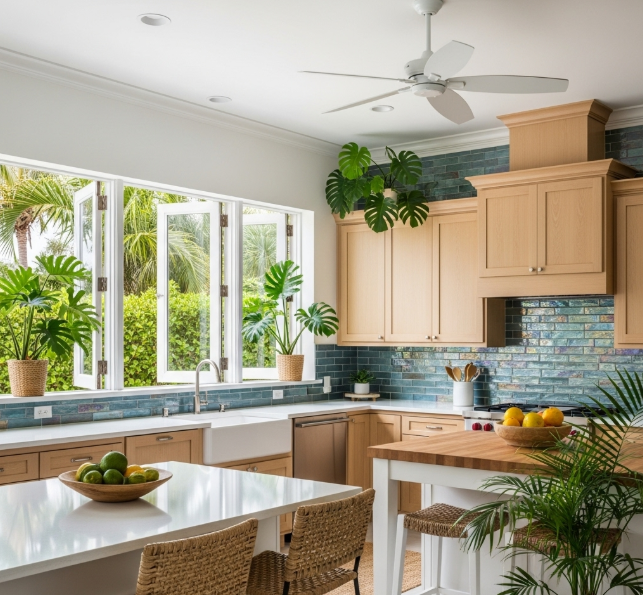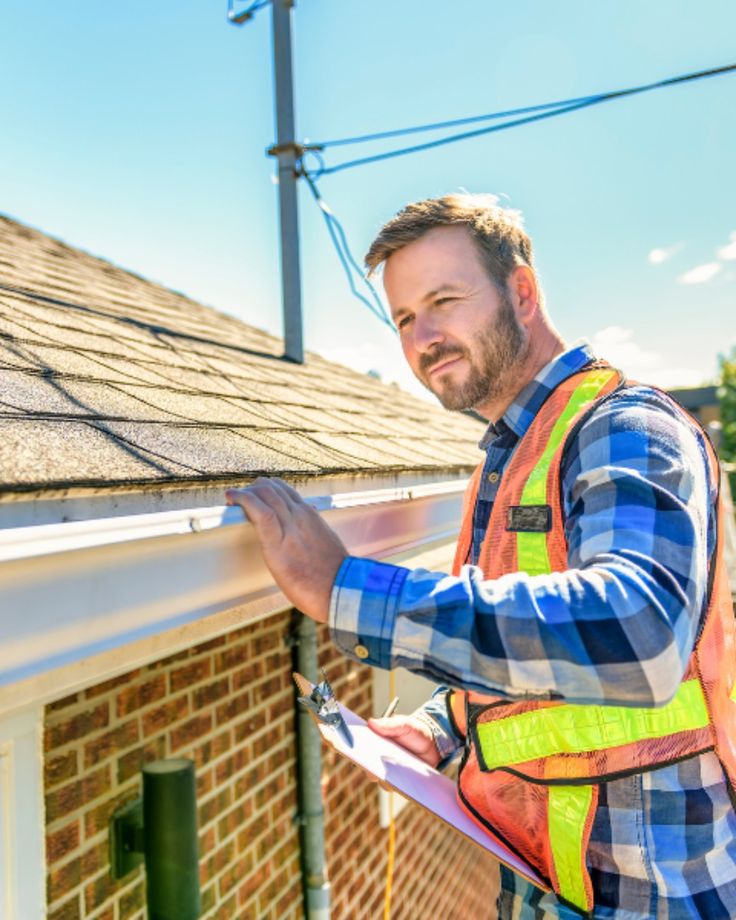If you’ve ever spent a summer in Florida, you already know the weather isn’t something you can ignore. It’s part of daily life. The heat, the humidity, the sudden downpours they shape everything from the clothes we wear to the way we build our homes. And nowhere is that more obvious than in the kitchen. A Florida kitchen design isn’t just about picking cabinets that look good in a catalog. It’s about creating a space that can handle a tropical mood swing hot one minute, rainy the next, and somehow still sticky at midnight. It’s about thinking ahead so the place where you cook, gather, and sometimes just hang out doesn’t turn into a sweaty, uncomfortable mess by August.
I’ve seen kitchens here that are basically built for the climate airy spaces with materials that laugh at humidity, layouts that let the breeze flow right through, and colors that make the space feel fresh even when it’s 95 degrees outside. That’s the heart of great Florida kitchen design: creating spaces that work for the real Florida, not just the one you see in postcards.
How Does Florida’s Climate Influence Kitchen Design?
Florida’s weather isn’t shy. The humidity can be so high your cutting board feels damp, and coastal salt air will happily chew on your metal fixtures if you’re not careful. Then there’s the sun beautiful, but relentless. If your kitchen isn’t planned with all that in mind, you’ll notice problems fast.
That’s why people here pick materials and layouts that fight back. Humidity means you avoid surfaces that swell or warp. Heat means you think about airflow and cooling. Salt air means you choose hardware that won’t corrode before your next family reunion. And storms? You design with the idea that a window might have to take a beating now and then.
What Materials Work Best for a Florida Kitchen?
Moisture-Resistant Cabinetry
Regular wood might look great on day one, but give it a couple of Florida summers and you’ll start to see swelling or bending. A lot of folks use marine-grade plywood, good laminates, or even aluminum cabinets for areas near patios or outdoor spaces.
Durable Countertops
Granite and quartz are big favorites here because they shrug off heat and moisture. Some people also love sealed concrete or quartzite they have that solid, lasting feel that works well in a busy home.
Flooring That Can Take the Heat and Humidity
Tiles rule the game here. Porcelain and ceramic tiles don’t mind water, and they stay cool when the weather’s hot. Waterproof vinyl planks are also catching on, especially if you want that wood look without the “wood warping” headache.
Why Ventilation Is a Game-Changer in Tropical Kitchens
Without proper airflow, a Florida kitchen becomes a sauna before you’ve even eaten breakfast, and not in the serene, spa-like manner. It’s the type of heat that gets you sweaty and exhausted, especially when you’re cooking something on the stove for longer than a few minutes. Ventilation is therefore not merely a pleasant add-on here it’s necessary. Big windows do make a big difference, particularly when they’re situated to intercept those cross-breezes that blow in the afternoons. Ceiling fans work to keep the air circulating, disrupting that heavy, stagnant sensation that will likely accumulate in humid conditions. And don’t even get me started on a good range hood one that actually exhausts outside rather than recycling the air back into the room because it can suck out heat, steam, and cooking odors straight from the air. In most new homes, the kitchen floor plan flows directly into the living room or out onto a patio, so there’s free air flow and no sense of being closed in. When it’s well done, you don’t merely cook in comfort you actually want to be there.
How Natural Light Influences Florida Kitchens
Sunlight is one of Florida’s attractions, but there is such a thing as too much of it, and it can make your kitchen a greenhouse. Designers here tread a delicate balance between light and blinding. Big windows, skylights, and sliding glass doors are commonly employed to usher in natural light, but they’re coupled with techniques to keep out too much heat. Low-E glass is a popular choice because it lets in light but shuts out UV rays that will cause wood and fabric to fade.
To mellow the brightest rays, some homeowners employ light-colored blinds or shades that permit partial light entry. Pergolas or roof overhangs outside can also serve to shade large windows and glass doors. Some kitchens even incorporate reflective backsplashes that reflect daylight further into the room without exclusive reliance on direct sunlight.
What Color Combinations Are Effective in Tropical Kitchen Designs?
The Florida environment provides unlimited inspiration for kitchen hues. Coastal residences tend to utilize ocean blues blended with sandy beige or pale cream colors to reflect the beach. White and light wood are classic choices that create an airy and clean atmosphere. Houses surrounded by foliage sometimes bring in fresh, leafy greens as accent hues. And for those who like a bit more personality, coral and citrus tones bring a cheerful, vacation-like feel into the space.
Lighter shades aren’t just about looks. They also help reflect light and keep the space feeling cooler. In a climate where heat is a year-round consideration, that visual coolness can make a difference in how comfortable the kitchen feels.
How Outdoor Living Influences Kitchen Design
Florida kitchens are commonly designed with an open connection to outdoor areas. It might be as straightforward as sliding doors out onto a patio or as sophisticated as a complete outdoor kitchen with grill, sink, and weather-resistant cabinets. The concept is to have it simple to transition between the indoor and outdoor spaces, particularly when hosting guests.
Outdoor kitchens here are built to last. Stainless-steel appliances stand up to the elements, stone countertops resist sun and rain, and cabinets are made from materials that won’t swell or rot. This setup is perfect for summer evenings when you’d rather cook outside than heat up the house. It’s also great for keeping strong cooking smells, like grilled seafood, out of the indoor kitchen.
Hurricane-Ready Kitchen Design Tips
If you’ve lived here through hurricane season, you know the drill. Kitchens in risk zones often have impact glass, cabinets anchored firmly to studs, and waterproof materials down low where storm flooding might touch. Some homeowners even plan for backup generators so the fridge and a few lights can stay on when the power’s out.
The Role of Energy Efficiency in Florida Kitchens
Cooling a kitchen in this climate can be expensive. That’s why more people are picking energy-efficient appliances, LED lights, and reflective roofing. Induction cooktops are also popular because they don’t throw off as much heat as gas or traditional electric burners.
Practical Storage for a Humid Climate
Moist air isn’t friendly to dry goods. Flour, sugar, and crackers go stale faster here. That’s why some people invest in climate-controlled pantries or at least airtight containers. Smaller storage spaces also make sense because you can restock often instead of keeping big quantities that might spoil.
Trends Driving Modern Florida Kitchen Design
Trends here often start with the climate, then layer on style. Right now, seamless indoor-outdoor kitchens are a hit, along with eco-friendly materials like bamboo cabinets and recycled glass counters. Smart appliances are everywhere, and minimal designs with open shelving make the space feel cooler and less cramped.
Why Every Homeowner Should Think Long-Term
A Florida kitchen isn’t just a weekend project it’s something you want to last for years in a climate that’s not always kind to buildings. If you choose materials and layouts with the weather in mind, your kitchen will still look and work great ten years from now. Florida kitchen design proves you can have both style and staying power.
FAQ
- What is the best flooring for a Florida kitchen?
Porcelain or ceramic tile is best for handling moisture and staying cool. Waterproof vinyl planks are also a good choice if you like a wood look. - How can I protect my kitchen from humidity damage?
Pick moisture-resistant materials, seal any wood surfaces, and make sure your kitchen has good ventilation. - Do I need hurricane-proof features in my kitchen?
If you live in a coastal area, yes. Impact windows, anchored cabinets, and waterproof finishes are worth it. - What colors help keep my kitchen cool?
Light shades like white, pale blue, and soft green reflect sunlight and make the space feel cooler. - Can I have an outdoor kitchen in Florida?
Absolutely. Just use weatherproof materials like stainless steel and sealed stone.
Resources
- Florida Building Code – Kitchen Design Guidelines
- U.S. Department of Energy – Energy Efficiency in Hot Climates
- National Kitchen & Bath Association – Climate-Specific Design Tips
- Florida Climate Center – Weather Data & Insights
- American Society of Interior Designers – Sustainable Kitchen Materials


